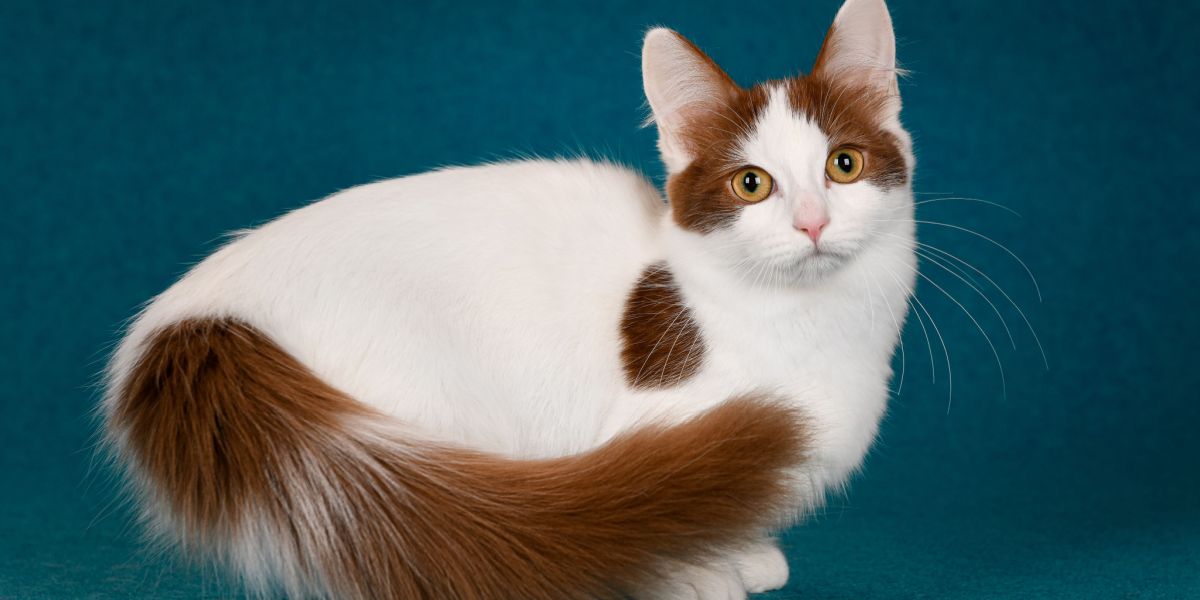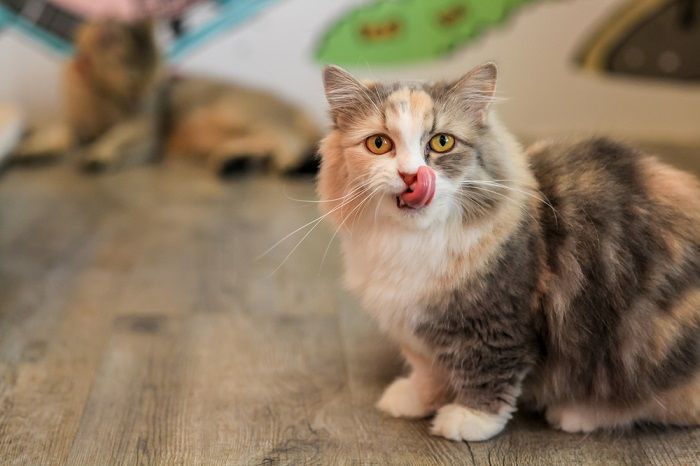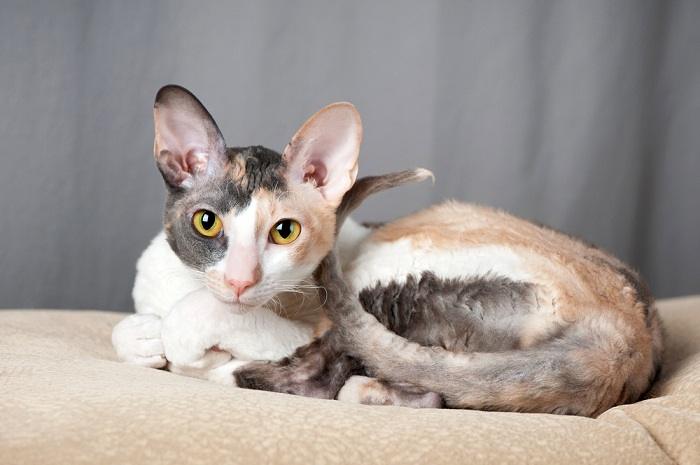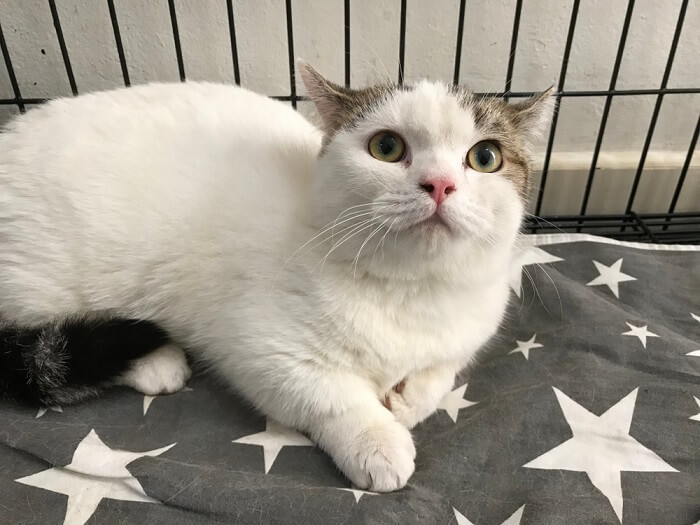
There are several reasons why a cat may be smaller.
Small cats are cute. Well, actually, so are larger cats, medium cats, and, well… all cats really! But if you’re a proud pet parent to a petite cat, you may be asking, “why is my cat so small?” This can be especially true when comparing your cat to other, larger, or more “normal” sized cats.
There are a few reasons why you may have a small size cat. Cat breeds, sex, age, and genetics all play a role in size. There are also some nutritional and medical concerns that can cause cats to be on the lower end of the size spectrum.
Read on for more information about small cats, what is normal and when to be concerned.
1. Is My Cat Just Still Growing?
If you own a small young cat or kitten, it can be difficult to tell if they are genuinely undersized or still growing. Cats are fast growers, and the average cat usually reaches their full size by around 40 weeks (around 9 months old).
Over 75% of this growth is achieved by the time they are 30 weeks old, and then rapidly slows down. It can be confusing that your cat can be sexually mature from 4-5 months of age, and are often then considered ‘adult’, so it is worth knowing that their physical growth continues past this time. Larger breeds such as Maine Coons may continue growth until over 1 year of age.
2. Breed
The evolution of cat breeds has advanced tremendously in recent decades. There are now significant differences between breeds when it comes to many factors: coat type and length, color, personality, and size. The breed of cat you own will play a huge role in their size.
There are certain cat breeds that are known for their small stature, even when fully grown. The average domestic cat weighs about 10 pounds (4.5kg), and cats with a normal adult weight less than this are known as ‘small breeds’.
Here are some of the most common small breeds:
- Singapura – one of the smallest breeds, they only reach about half the size of an average domestic cat.
- American Curl – known for their backward curling ears, members of this breed are usually on the smaller end of the scale.
- Munchkin – the Munchkin cats carry a genetic mutation that causes their characteristic short legs and kitten-like persona.
- Siamese – the chatty Siamese cats are petite in physical size but large in character!
- Devon Rex and Cornish Rex – these are both small, delicate breeds.
- Japanese Bobtail – with their cute tails, this breed is also one of the smallest, which only increases the ‘aw’ factor.
3. Gender

Nutrition is important to cat growth.
As with many species, female cats are generally smaller than male cats. Cats that have undergone early neutering may be slightly larger than those that are not neutered until adulthood. This is due to delayed closure of the growth plates of long bones.
4. Nutrition
A good diet is essential for both health and growth. Nutritional deficiencies can cause stunted growth in young cats, and health problems in adult cats. Cats are obligate carnivores, meaning they are highly reliant on animal protein in their diet and have specific nutritional needs, which can cause issues with growth if not properly addressed.
Kitten Nutrition
Kittens grow very quickly, so they need high levels of proteins and fats. Young kittens up to around 5-6 weeks should be drinking milk, and if this is not provided adequately due to the loss or illness of the mother, their growth will likely be affected.
Abrupt or early weaning can also cause growth problems. Once weaned, kittens should be provided with a wet or dry diet specifically formulated for kittens to ensure the high levels of protein and fats necessary for growth and development.
Adult Nutrition
Adult cats require a diet based mainly on animal protein. They should be provided with a complete food that is formulated correctly for their life stage and is, therefore, suitable nutritionally.
Cats are traditionally grazers, hunting and feeding on multiple meals of small prey. This means that they often need feeding at least twice daily. Inadequate amounts or quality of food leading to poor nutrition, can cause chronic health problems.
Feeding Habits

If your cat is losing weight despite adequate access to food and water, see a veterinarian.
Cats usually eat multiple small meals a day, although our domesticated pet cats usually adjust well to eating two meals a day, when fed by their devoted owners. However, some cats struggle to adjust to a rigid feeding schedule and benefit from more ad-lib feeding.
In busy households with multiple pets and people, some more nervous cats may find it difficult or stressful to find a quiet and unobstructed time to eat and therefore gain proper nutrition. Multi-cat households can be problematic if there is one cat that is more dominant that keeps other cats from getting enough food.
If you are concerned that your cat isn’t eating enough and is looking thin, make sure your cat has plenty of access to fresh food and water, even if that means some creative placement of food bowls around their environment.
5. Medical Concerns
If you are concerned about your cat’s size or weight, a trip to a veterinarian is a good idea to rule out health concerns. There are some genetic traits that can cause cats to not grow properly, and there are various diseases that cause weight loss and ill-thrift. A medical examination with a vet would be a good start if you are worried about your cat’s growth.
Dwarfism
Dwarfism is very rare in cats and can be caused by genetic or chromosomal mutations, hormonal deficiencies, or abnormal growth plates. Cats with dwarfism often have short legs and a disproportionate body, leading to a very unique look. This condition can come with multiple health issues, so if you suspect dwarfism in your cat, seek advice from a veterinarian.
Parasites
Intestinal worms can cause weight loss in adult cats, and in kittens, they can stunt growth. Common internal parasites include tapeworms, roundworms, pinworms, and hookworms. Some of these can be passed to humans, so they are a public health risk.
Other symptoms in cats include changes to appetite, vomiting, and diarrhea, and a swollen abdomen. Getting your cat anti-parasite treatment regularly is recommended by veterinarians to prevent infestations.
Other Medical Conditions

Some conditions that affect a cat’s size are more prevalent in older cats.
There are a few health problems in felines that can cause weight loss, with diabetes and hyperthyroidism being common candidates. Both of these can cause voracious appetites paired with sudden weight loss, and affected cats are often also very thirsty and show frequent urination. These diseases are most common in older cats.
Hyperthyroidism can also cause hyperactivity and poor coat condition. If your cat is losing weight despite a good appetite, a veterinary health check is advisable.
Summing Up
We all adore our cats, whatever their size or shape. If you have a petite kitty, it is most likely that this is due to their age, breed, or sex, and is probably perfectly normal.
However, if you are concerned that your kitten isn’t growing as expected, or your adult cat’s weight, appetite, or feeding habits change, it is never a bad idea to take them to a veterinarian to perform a physical examination. There are some nutritional and medical concerns that can alter size, growth, and weight, which are safest to rule out.
Also Read: Hyperthyroidism In Cats: Symptoms, Treatment & Causes
Frequently Asked Questions
Is it normal for a cat to be small?
Yes. Some breeds and types of cats are naturally smaller, such as the Devon Rex or Siamese. Female cats are also often smaller than males. However, cats can also be small due to poor nutrition or health conditions such as dwarfism.
Do runts stay small?
The 'runt of the litter,' or the smallest in the group, can catch up with their littermates as long as they are healthy and are given good nutrition. If they are the runt due to a congenital health issue, or they are not carefully monitored to make sure they are not too weak to feed, then they may remain small and stunted.
What is considered a small cat?
The average cat weighs about 10 pounds (4.5kg). Adult cats who do not reach this weight are considered small.
Why is my cat not growing?
Cats usually stop growing by around 9 months of age, or slightly older if they are a large breed. If your kitten has stopped growing before this time, it may be due to parasites, poor nutrition, or an underlying health concern and veterinary advice should be sought.







